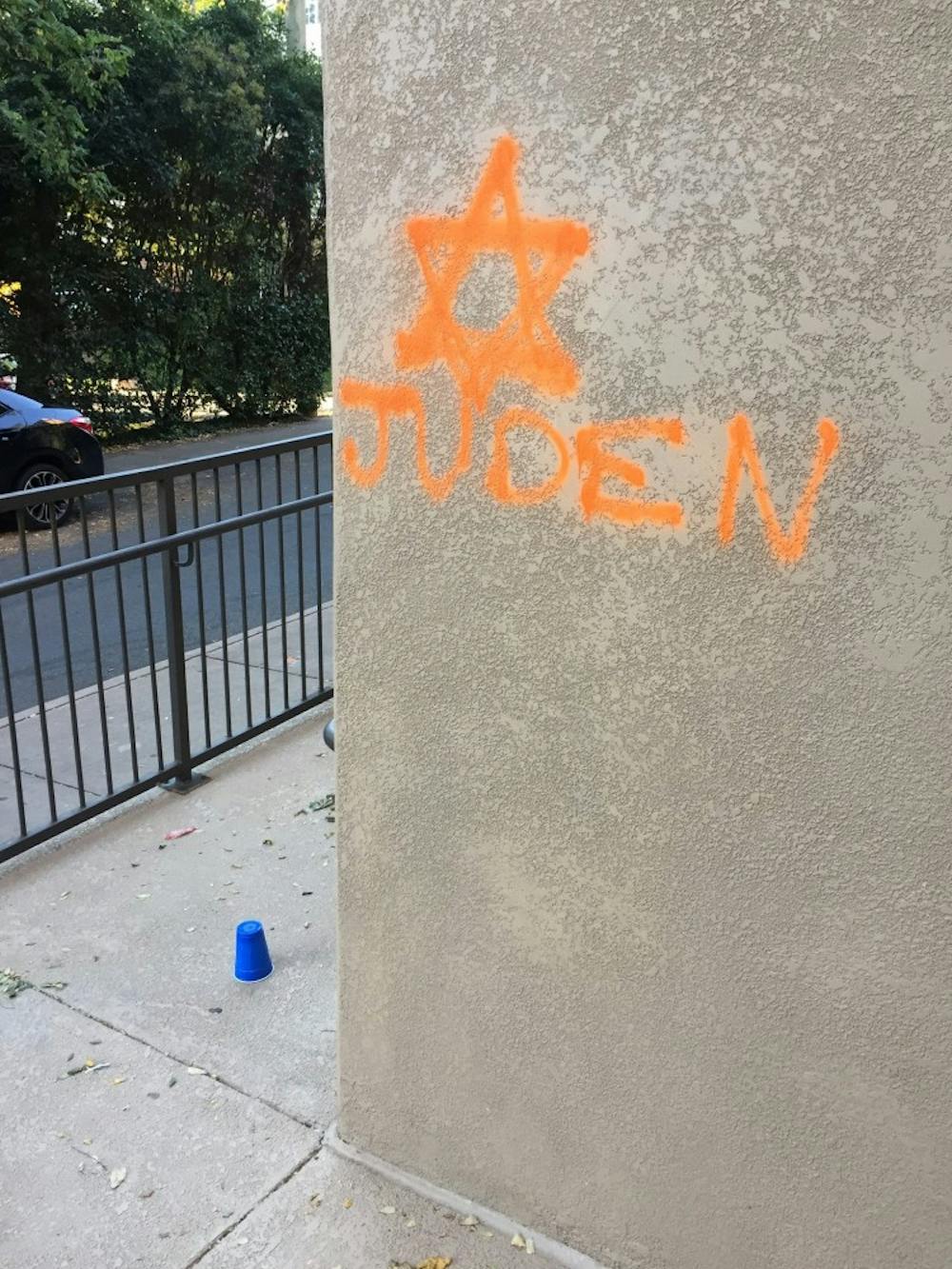Throughout the fall semester, a number of bias-motivated incidents have occurred on Grounds targeting a variety of minority groups.
The University took note of the increased number of incidents and several administrators condemned what they called “acts of bigotry and bias” in a Nov. 2 email.
“There are several theories for why this may be occurring, including the tone and tenor of the ongoing national election,” the email — which was sent out days before Donald Trump defeated Hillary Clinton in the presidential campaign — said.
In response to the incidents, a campaign called “Eliminate the Hate” was founded to provide the University community with solidarity and education regarding hate speech.
Other student responses included a protest at the Board of Visitors meeting Nov. 11 called on the University to provide a safe space for victims of hate crimes.
Below is a timeline of several of the incidents that occurred this semester:
Sept. 2: Residents and resident advisors of the Kent-Dabney Dorm Association discovered the N-word had been written in permanent marker on the doors of students’ rooms, walls and whiteboards across several floors.
While no specific individual appears to have been targeted — the slur was written on the doors of residents and RAs of a variety of races, ethnicities and gender — students of color were among the students subjected to the graffiti, University spokesperson Anthony de Bruyn said in an email statement.

Sept. 6: A report came in through the Just Report It system that, on Sept. 6, a male used derogatory language toward the ethnic origin of a graduate student at the Snyder Tennis Center.
The targeted individual was among a larger group waiting to use a court and the identity of the perpetrator is unknown, de Bruyn said.
Oct. 23: Anti-Semitic graffiti was found outside of the GrandMarc apartment complex on 15th Street. The graffiti depicted an orange Star of David with the word “Juden” — the German word for “Jew” — written below it.
In a joint statement sent that night, Student Council and the Jewish Leadership Council noted “the imagery painted at GrandMarc is intended to intimidate Jewish students and make them feel uncomfortable in their community.”
“It’s direct Holocaust imagery and that’s what’s problematic about it,” third-year College student Michaela Brown said. “It was graffiti that was used to vandalize Jewish shops and homes and destroy them.”
Brown also noticed two other pieces of graffiti on the building written in similar orange paint — one saying “Satan” and the other a pentagram.

Oct. 30: An anti-Muslim remark was written along the walls of Brown College sometime between the mid to late hours of Oct. 30.
The word “terrorist” was written in pencil near a suite where two Muslim students were residing. An arrow was drawn pointing towards the rooms of the students.
An email was sent to the student body by Dean of Students Allen Groves informing students of the incident and condemning the comments.
“It is our belief this graffiti was placed at this specific location to target and intimidate the residents who live in this room,” Groves said in the email. “As a community, we categorically reject and condemn this type of hateful message.”

Oct. 31: A report was received through the Just Report It system on Oct. 31 stating that a male walking within a larger group used a racial slur towards a group of African-American students.
The incident occurred near a first-year residence hall, and the identity of the alleged perpetrator is unknown, de Bruyn said.
Nov. 2: A report was received through the Just Report It system that, on Nov. 2, a male student returned to his room in a residence hall and found a slur used against gay males written on his door.
According to the Eliminate the Hate Facebook page, the student was an RA at the International Residential College.
The identity of the alleged perpetrator is unknown, de Bruyn said.
Nov. 3: A report was received through the Just Report It system on stating a stuffed monkey with dreadlocks and a Jamaican cap was attached to the front of Dunglison dorm.
Although the incident was reported as an act of racial bias, de Bruyn stated the students involved did not intend for it to be, and he said that though the doll was tied to an outer wall, a “hangman’s noose” was not involved.
“They described the action as part of a larger ‘prank’ among friends that was not motivated by racial animus, and demonstrated sincere remorse about the unintended impact on members of the community,” de Bruyn said of the perpetrators.
However, some students considered the act to be offensive, including Weston Gobar, the political action chair of the Black Student Alliance and a third-year College student.
“One might think that at least one person within that group would have the sense to ponder the image of a monkey decorated with a rastafarian hat and dreads being hung from a rope,” Gobar said in an email statement. “One might think that someone within the group would point out how reminiscent the scene was to some of the terrible atrocities perpetrated towards black people in this country coupled with the stereotypical black associations the doll had.”
Although Gobar acknowledged he did not know whether the action was intended as a joke, he said the effect of “alienating students at this University” was the same.
“I am disappointed in the ignorance and insensitivity of the students who did this," Gobar said.







